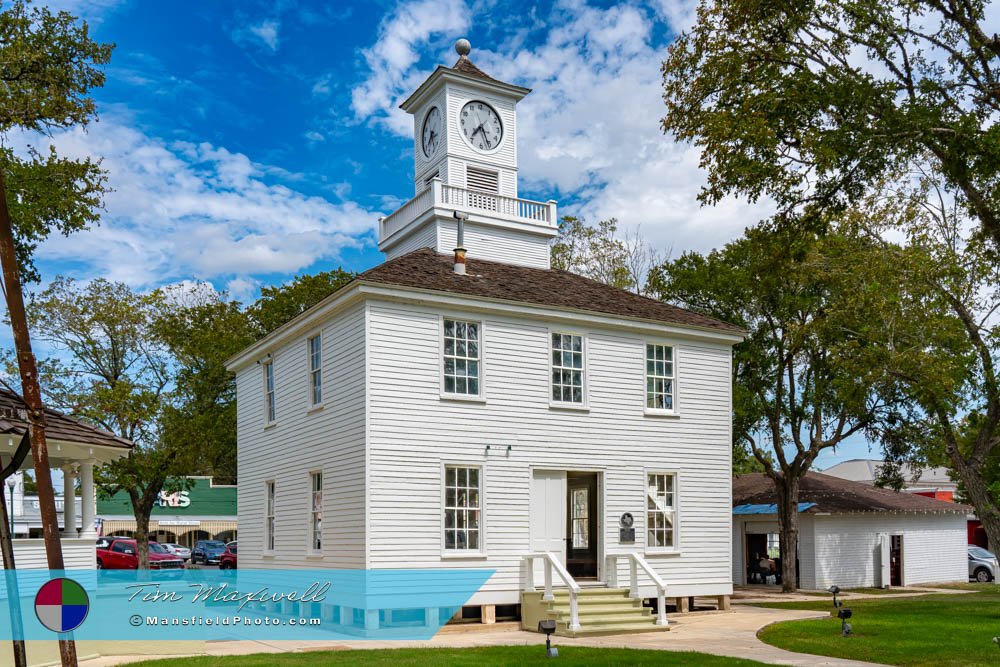Mansfield Photography
Fayetteville, Texas
– A Snapshot of Texas History Frozen in Time.
Founded in the 1800s, Fayetteville, Texas, is a town where history seems to linger in every corner. This small but historically significant community provides visitors with a unique glimpse into the past, offering an authentic Old West feel that few places can replicate. Whether you’re wandering around its beautifully preserved town square or exploring the remnants of its railroad past, it offers a quiet, but captivating experience. Let’s take a journey through the history and present of this unique Texas town.
Early Foundations: The “Old Three Hundred” Legacy
The town traces its roots back to some of the earliest settlers in Texas. The town was founded by a group of individuals that included three members of Stephen F. Austin’s “Old Three Hundred,” the first settlers who received land grants in Austin’s colony. Named after Fayetteville, North Carolina, the new Texas town began to take shape as more settlers arrived, bringing with them hopes of building a prosperous community in the expansive Texas frontier.
Fayetteville was officially incorporated in 1882, becoming a recognized entity in Texas’ growing network of small towns. In its early years, the town was known for its agricultural economy, with cotton playing a major role in local industry. While Fayetteville never grew into a large city, it quickly became a vital hub for local farmers and ranchers.
The Town Square: A Step Back in Time
One of the most remarkable aspects of Fayetteville is its small, beautiful town square, which feels like it has been paused in time.
The square evokes a sense of the Old West, with its rustic atmosphere, historical buildings, and a layout that has changed little over the decades. At the center of this square stands the historic Fayette County Precinct No. 2 Courthouse, a unique two-story wooden structure that adds to the town’s charm.
Built in 1880 at a cost of just $800, the courthouse was a rare sight in early Texas, where precinct-level courthouses were not common. Today, it remains standing, preserved as a testament to the town’s enduring legacy. The courthouse clock, which was donated by the Ladies Club of Fayetteville in 1934, continues to mark the passage of time in this small community.
Railway Days and The Fire of 1893
Fayetteville experienced a brief economic surge in 1887 when the Taylor, Bastrop, and Houston Railway built a line through the town. The arrival of the railroad offered new opportunities for trade and transportation, helping the local economy grow. It also brought more settlers and businesses to Fayetteville, contributing to its development.
However, tragedy struck in 1893 when a devastating fire consumed one side of the town square. The fire served as a wake-up call for the town’s leaders, who quickly acted to install a city waterworks system and establish a fire department. These measures ensured that Fayetteville was better prepared for the future, and they also highlighted the resilience of its residents in the face of adversity.
Preserving the Past: Fayetteville Today
While Fayetteville may not be a bustling metropolis, its small-town charm and historical significance draw visitors from far and wide. Walking through the town square feels like stepping back in time, with many of the buildings retaining their original Western-style architecture.
Unlike the many towns that have modernized or lost their historical feel, Fayetteville’s dedication to preserving its heritage makes it stand out as a true living museum.
The population of Fayetteville remains small, with a little over 250 residents today. Despite its size, the town continues to thrive in its own quiet way. The preservation of its courthouse, town square, and other historical landmarks make Fayetteville a must-see destination for those interested in Texas history. The spirit of the Old West is very much alive here, making the town a fascinating stop for travelers seeking an authentic experience.
Conclusion: Fayetteville’s Enduring Appeal
Fayetteville, Texas, is more than just a dot on the map—it’s a Texas bucket list town where history lives on. From its roots with the “Old Three Hundred” to the wooden courthouse that still stands proudly in the town square, Fayetteville offers a peaceful, yet captivating connection to the past. Whether you’re a history enthusiast or simply looking for a quiet getaway, Fayetteville provides a rare glimpse into a time when Texas was still finding its place in the world. It’s a town where the past feels present, and where the simple beauty of history speaks for itself.
📸 Interested in More Photos of This Town?






